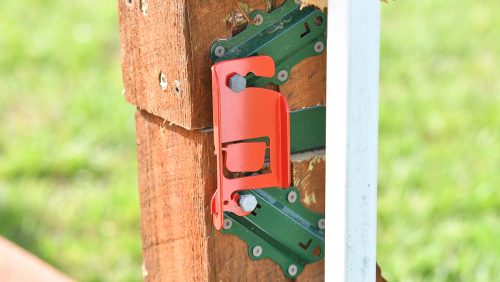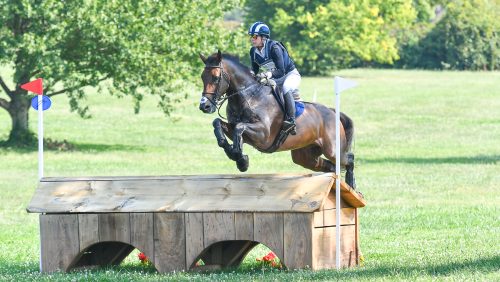Seattle—Dec. 16
Eventers converged on Seattle for this year’s U.S. Eventing Association Annual Meeting and Convention, held Dec. 11-15, and conversations swirled around topics that will ensure the association and sport have a robust future. Diversity, equity and inclusion and perennial discussions on how to make the sport as safe as possible dominated conversation.
At the board of governors meeting at the start of the convention, Dr. Jill Stowe, a professor of agricultural economics at the University of Kentucky, presented the results of the DEI Climate Study, which was conducted in January in collaboration with the USEA’s Diversity, Equity and Inclusion Committee. In the survey, adult members and previous members of the USEA answered questions regarding inclusivity in eventing. The results were presented to the board in August, but Stowe outlined some of the pertinent figures.
Of the respondents, 35% said they were part of a marginalized group, as defined by race, gender, age, sexual orientation, socio-economic status, political orientation, disability or religion. Amongst the marginalized groups, 45-87% (depending on the group) reported having a negative experience within the past 12 months, and 12% of those in marginalized groups reported they didn’t feel safe, valued and treated fairly and with respect during eventing activities.
Heather Gillette, chair of the DEI Committee encouraged the board to think hard about those figures.
“What does ‘safe’ mean?” she asked. “Sometimes it’s personal safety, feeling welcome, don’t feel alone… And that fact that 25% of marginalized [people] feel like they don’t belong? I would hate that 25% of my barn or meeting felt unwelcome.”

Several board members said they were shocked by some of the figures and that the information stuck with them through the four days of meetings.
Erin Tomson, secretary on the board, said in the weekend’s final meeting that several convention attendees came to her with experiences they had during the convention in which they felt marginalized or excluded, but all asked that specifics not be shared.
“We have an inclusion problem,” she said. “I think that’s not uncommon at all, but we need to be aware and take strategic steps to work on addressing it and not performatively say we have a DEI committee.
“The fact that they asked to be anonymous sends a message,” she added. “If they’re not comfortable sharing with the broader group, that’s a problem.”
The climate survey included a spot for respondents to share stories and comments, and the board agreed to use that information to come up with clear action items. At both meetings, board member Dana Bivens urged the group to hold itself accountable for making changes and to provide information on resources for reporting negative inclusivity experiences, similar to what is in place to report horse abuse or to submit an event review.
ADVERTISEMENT
The DEI Committee in November released The Godshall Accessibility Report, named after Christopher Godshall, who was unable to watch his daughter go cross-country due to limited mobility due to myasthenia gravis. The report gave suggestions for event organizers that can improve accessibility, whether for those who are temporarily disabled, such an injured trainer, or spectators like Godshall. While the suggestions in the report are not mandatory, Sharyn Antico, a board member and competition organizer, encouraged all organizers to consider what provisions they could make during their competitions.

On the educational side, Dr. Lois James, the assistant dean of research in the Washington State University College of Nursing and a trainer at Leading Edge Equestrian Center, led a seminar on implicit bias. James, who has worked extensively to address bias in the police force, emphasized that all people have biases, and that it’s important to be aware of them. She also noted the difference between intent and impact: Just because someone isn’t being intentionally marginalizing another, their words or actions can have a great impact.
James spoke of the 30×30 initiative the Seattle Police Department is using as it works to increase female representation in its force to 30% by 2030, and the significance of those numbers.
“Thirty percent is the threshold to have a voice, to have the ability to make change, not just have a seat at the table,” she said.
Safety Improvements
Just as improving inclusion problems can start with education, Danny Warrington, chair of rider safety, was emphatic that education is where improving safety starts.
“Education level across the board needs to be elevated,” he said. “A lot of times you don’t know what you don’t know. What I didn’t know at 32 about eventing and what I know now are not the same. We as the ‘elders’ need to pass along the information. We need to reach out to people and help inspire them.”
He shared a story about being required to take a brief test before he was allowed to rent a scooter recently, and proposed that riders be required to take a brief 10-question test when entering a new level for the first time. He hopes such a test would help riders realize where they lack knowledge, such as where on the USEF website to find the rulebook.

Scott Weide, one of the Area VII young rider coordinators, shared that he was astounded by the differences between the Eventing Coaches Program trainers he utilizes for team course walks and those who aren’t certified. He wanted to know how to make the program more ubiquitous in the sport.
It’s a problem that’s plagued the program both in its current version and when it was called the Instructors’ Certification Program. A lot of coaches, especially those who are established, don’t see the need to take the time and expense to get certified; upper-level rider and board member Jacob Fletcher admitted he didn’t see the need for the certification.
One idea Warrington pushed hard was getting the word out to parents, suggesting that if they knew about the program that perhaps they’d put pressure on their childrens’ instructors to participate. He also encouraged creating a scholarship program to help coaches attend the program.
ADVERTISEMENT
“Each area can get proactive,” he said. “Talk to the area coordinator: We want to send three or two or one of our local trainers to go to this. How are we going to raise money? We had a 4-H club do one of our [LandSafe] clinics with pancake breakfast [fundraisers].”

On the cross-country safety side, an observation brought to the safety committee has led to a proposed change to cross-country fence design that would require the “leading edge” of the fence to be at a 45 degree angle. This retrofit is required for the front edge of any fence above 20 inches high to be 45 degrees rather than vertical. The reason behind this change is because a vertical lip—such as that created by the decorative top board on a cabin—is enough to either catch a knee and cause a fall or even break a knee, said Morgan Rowsell, chair of the Eventing Course Designers/Builders Committee.
“We’re talking about a game of inches,” said five-star eventer Marc Grandia, who is the cross-country chair on the Safety and Equine Welfare Committee. “An inch and a half on the edge—it can just be decorative framing—has caused some accidents and injuries through the years.”
Other Points Of Note
• During the first board of governors meeting, the board voted to recommend to the U.S. Equestrian Federation that a rider be permitted to participate in the USEA Emerging Athlete U21 Program and the USEF Eventing Development U25 Program should they be chosen for both. David O’Connor, who is heavily involved in both programs, spoke in favor, saying the programs had different functions. EA21 is about building overall education of a rider while the development program focuses on the performance development of a horse-and-rider pair. “What’s the downside of having education from both sides?” he said.
• The USEA Foundation unveiled a new grant program called the Organizers Relief And Competitions Fund. This fund was started with $20,000 seed money from an anonymous donor with a promised match if an additional $20,000 is raised. To participate, organizers would need to contribute $1 per starter at their highest-attended event of the year (so if one venue holds four events a year, they would only have to pay the fee once that year) over the course of two years for five years of coverage.
“The coverage amount gives you an opportunity, if you have some sort of crisis: weather that causes flooding, lightning strike destroys jumps,” said Katherine Cooper the USEA development officer on the foundation.
If an event experiences an extreme weather event, such as Hurricanes Helene or Milton which disrupted events this fall, organizers could apply for a $5,000 grant to repair damage.

• The USEA board is exploring the possibility of Tennessee leaving Area III to become part of Area VIII. The state’s competitions expressed interest in making the change, because very few of their competitors come from Area III states outside of Tennessee.
• The board of governors has tabled action on any of the USEF extraordinary rule change proposals for their January meeting. All extraordinary rule change proposals will be voted on at the USEF Annual Meeting, taking place Jan. 23-25, while the USEF board will vote on standard rule changes in June.
• The board instituted term limits for committee members, who will now serve three-year terms with the opportunity to renew their position once. Committee chairpeople have the option to have a third term if approved by the executive committee. After a committee member has reached their maximum, the committee can choose to keep them on as a non-voting faculty advisor to prevent the loss of institutional knowledge. To prevent losing an entire committee at once, the current members’ terms will end on a staggered basis.













